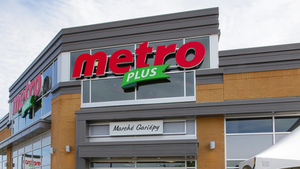INDEPENDENTS MAP ANTI-SUPERCENTER TACTICS
HOUSTON -- Independents can overcome sales erosion from supercenters by developing a fight-back tactic based on better leveraging of their store image, said members of a seminar panel during last week's National Grocers Association convention here.Panel members -- three independents and one wholesaler -- said independents facing high-volume supercenters should understand and exploit strong points
February 17, 1997
AMITY K. MOORE
HOUSTON -- Independents can overcome sales erosion from supercenters by developing a fight-back tactic based on better leveraging of their store image, said members of a seminar panel during last week's National Grocers Association convention here.
Panel members -- three independents and one wholesaler -- said independents facing high-volume supercenters should understand and exploit strong points of their own stores' image.
Additional strategies for independents may include offering a new emphasis on store brands, perishable items, friendly customer service, competitive pricing and other factors, panelists said.
Panelist Bill Lancaster, executive vice president of sales at Associated Wholesale Grocers, Kansas City, Kan., said supercenters continue to threaten supermarkets because of their rapid growth rate. But, he said, independents can begin to fight back by assessing their own image.
"We recommend that you write out your [understanding of your] store's image, even describing your modular departments," Lancaster noted. "Go over it with your employees so they know the foundation of the image. They need to know what you stand for as a company."
In another experience, when panelist Guy Steiner, vice president of Country Mart, Ottawa, Kan., learned that a Wal-Mart Stores' supercenter was to be built across the street from one of his stores, he informed his top-level managers. He took them to see existing supercenters and asked them "to help us develop a battle plan that would negate the strengths and exploit the weaknesses of the supercenter."
Steiner assured his employees that no one would be laid off in the process. He studied the salaries of supercenter workers and made adjustments to keep his key employees' salaries up to a competitive level.
"We felt very good about this as the supercenter managers were in our stores long before they opened and offered jobs to every department head we had, and they continue to do this to this day."
Then, with the backing of his management staff, Steiner assessed his store's image.
One of the strengths he identified was Country Mart's private-label program. It was found to be successful because it was well established and offered quality, variety and attractive price points.
The benefit was highlighted by means of full-page advertisements in the local newspaper, which raised shopper awareness of the private-label line. Also touted in the ads were quality perishables, specialty departments, low prices and in-store customer services.
Nine months before the Wal-Mart supercenter opened, Steiner re-examined his prices, implementing changes in the price lineup at that time so his customers could become accustomed to them.
"This way we had our retails where we wanted them to be when the supercenter came in to price-check us and establish their opening retails."
As time went on, Steiner continued to add programs such as a double-money-back guarantee on perishables, a frequent-shopper punch card and buy-one, get-one-free promotion.
Finally, on the day the supercenter opened, he checked all high-velocity items at the supercenter and matched prices by noon.
Price also became a factor at B&R Stores, Lincoln, Neb., when a Super Kmart Center opened next door.
Panelist Richard Malousek, B&R vice president, said one of his warehouse format stores -- premised on low prices -- was threatened by Kmart's advance.
"It's key to at least know what the image of your store is, really know it. Then you can go after your strong points," Malousek told seminar attendees.
Four weeks before the supercenter opened, B&R cleaned up the store and got sharper on pricing by matching Kmart's prices and inaugurating in-store price comparisons to let customers know.
"For the first week, we were 10% down in volume. That was a pretty good hit on a high-volume store. The second week had about a 5% decline in volume. The third and fourth week started running about 2% to 3% down. We ended the first year with the supercenter in town with a 5% sales increase over the prior year," Malousek said.
Another independent operator on the panel -- Doug Gerard, owner of Country Mart, Branson, Mo. -- netted double-digit sales increases despite competition from the addition of a Food Pantry section to a nearby conventional Kmart discount store.
Gerard fought back primarily on the basis of image by emphasizing the upscale nature of his product offer, community involvement and customer service.
About the Author
You May Also Like




